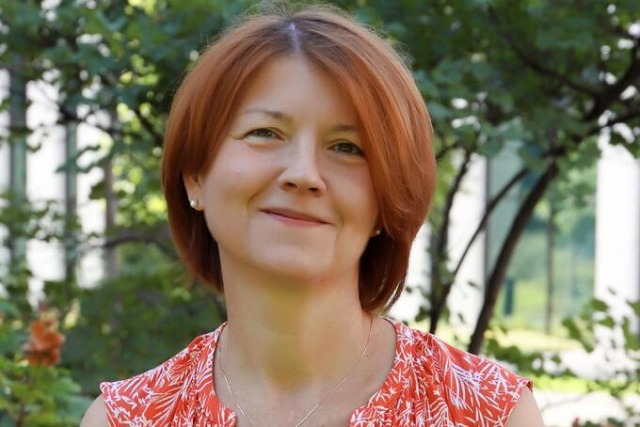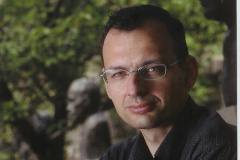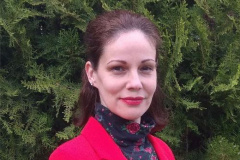Featured Lendület Member: Viktória Kiss
In the Bronze Age in the Carpathian Basin, huge social changes took place in the population living in the territory of present-day Hungary. Viktória Kiss, Senior Research Fellow at the Institute of Archaeology of the HUN-REN Research Centre for the Humanities and head of the MTA-BTK Lendület (Momentum) Base Research Group, and her colleagues are investigating these processes and the characteristics of the people who lived there. They are using state-of-the-art computer science, genetic and isotope-geochemical methods for this work.
One of the biggest challenges of the 21st century is the storage, publication and interpretation of large, complex scientific research datasets (big data). This is no exception for archaeological research, whose new and much more intensive collaboration with many disciplines over the last two decades – also known as the third scientific revolution – has multiplied and broadened the amount of information available.
 Viktória Kiss
Viktória KissThe MTA-BTK Lendület (Momentum) Base Research Group, led by Viktória Kiss, is now receiving support in the advanced category of the MTA Momentum Programme and aims to continue and renew its earlier research in the field of Bronze Age studies.
Continuation of basic research and methodological innovation
Kiss and her fellow researchers’ first Momentum project started in 2015 and focused on Bronze Age mobility. In the Carpathian Basin, the Bronze Age lasted from 2500 BC to 800 BC, and the first millennium of this period (2500-1500 BC) is the focus of the working group at the Archaeological Institute of the HUN-REN Research Centre for the Humanities. The new project will be an organic continuation and methodological renewal of their multidisciplinary basic research on the period of the contemporaries who lived in Hungary during the era of the builders of the great Egyptian pyramids and the Greek heroes buried in the Mycenaean mines.
The Bronze Age is important for the understanding of later historical processes, as it is the period in which the genetic picture of modern Europe is established,
resulting from the mixing of the three main components now present – Middle Stone Age hunter-gatherers, Neolithic farmers of Anatolian roots and Steppe shepherds – with different proportions in different regions; in this context the beginning of the ‘Indo-Europeanisation’ of Eurasia is attributed to this period.
The period also marks a significant step in the evolution of political structures, from the development of socially (narrowly) differentiated egalitarian communities to the earliest states, as it marks the emergence of the chiefdom society and the institutionalisation of social inequality. The research team will undertake a new approach to organising, analysing and publishing archaeological data from the latest archaeological and natural science studies (mainly human, isotope geochemical, archaeogenetic) and archaeometric data from recent years, in collaboration with the material sciences. The available data will also be further developed with new insights into the economic resources of the period, a subject that has been less researched thus far, and integrated into their existing research on settlement networks.
In addition to bioregional analyses, the research on the period itself, which began in 2015, has also focused on metal objects, as the period is associated with the appearance of bronze objects. The new material, an alloy of copper and tin, was much stronger than before, making it more suitable for making tools and weapons. Isotopic studies have helped reveal the origin of the raw materials used to make bronze objects. In present-day Hungary, there are no really significant copper deposits that were used in prehistoric times, so the surrounding Central European region must be investigated when searching for sources of metal raw materials. The third pillar of the previous tender was the study of settlements. Structural differences can be identified between the spatial position and structure of Bronze Age settlements, which can be used to establish a hierarchy between them. They examined how smaller, unfortified and larger, fortified settlements relate to each other in the chain of settlements.
The emergence of the elite
These relationship systems also allow conclusions to be drawn about the stratification of Bronze Age society. While egalitarian societies were typical in earlier periods, Bronze Age settlements and burials also show the emergence of an elite, which was able to maintain its power mainly by controlling the trade in raw materials. The characteristics of the settlements, the burials, the finds and the long-distance relationships suggest a more complex social structure in this phase of the Bronze Age than in the past, which can be interpreted in terms of economic cooperation and regionally controlled settlement systems.
“These research directions are also important topics for the new project, as they will allow us to build on them in the coming years to achieve the objectives of the Momentum advanced-category tender,” says Kiss. “The main objective of the new tender, which is just starting,
is to record and publish the results we have discovered thus far in structured, multi-level databases;
there will be parts of the results that are accessible to anyone and parts that are accessible only to specialists.” The databases will also be used to apply modelling techniques to existing results that reveal now hidden relationships and patterns between them.
Thanks to systematic research over the past decade, we now know a great deal about the society of the Bronze Age Carpathian Basin. Exogamous marriage, for example, was a common feature, with women from distant areas, sometimes 200 kilometres apart, marrying into communities. Exogamous marriage implies an extensive and long-distance network of contacts between different groups of people, which was certainly created by long-distance trade. The amber used in much of the jewellery of the period is a case in point. Modern methods of material analysis make it possible to trace the import of amber from the Baltic Sea region for the Bronze Age jewellery found in Hungarian sites. Of course, this immediately raises many questions: by what route, via water or land, did these jewels arrive in our region, and what goods did the local people trade over long distances?
Carpathian Basin changes in a Eurasian context
While in the previous Momentum project, population genetics studies related to group migrations were the primary focus, the current research will put more emphasis on the relationships of small communities that can be detected using state-of-the-art methods. Important conclusions regarding social structures can be drawn from this. The question arises as to whether Bronze Age societies were organised on the basis of consanguinity, or whether subordinate-superior relationships and alliances between biologically unrelated individuals may have been the dominant factor, which may be a sign of the evolution towards state-like organisation.
“All this
opens up new perspectives for understanding the lifestyle, diseases, nutrition, work habits, mobility, family and social relations of the people and communities living 4,000 years ago,”
says Kiss. “The modelling results based on these databases can provide a basis for assessing the changes in the Carpathian Basin in a broad Eurasian context, and in some cases even for comparing them with patterns from much later periods. The results are also closely linked to the development of new research directions, archaeological heritage conservation, museology and public education. We are also involved in the production of educational short films and podcasts, as well as the MTA Alumni Programme in secondary schools, to make our results as widely known as possible.”





